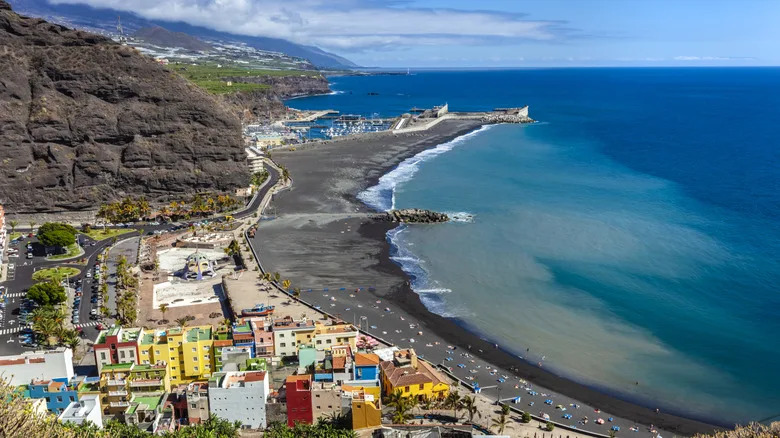Spain’s Canary Islands, located off the northwestern coast of Africa, are renowned for their stunning landscapes and rich cultural heritage. Among these, La Palma stands out as a remarkable destination, characterized by its black volcanic beaches and pristine natural beauty. The island, which is approximately 2 to 3 million years old, features dramatic geological formations shaped by volcanic activity over millions of years.
La Palma is one of the most volcanically active islands in the archipelago, highlighted by the 2021 eruption of the Cumbre Vieja volcano. This event underscored the island’s dynamic geological history and serves as a reminder of its volcanic origins. Known affectionately as La Isla Bonita, or “the beautiful island,” La Palma boasts an enviable climate with average year-round temperatures around 22 degrees Celsius (71 degrees Fahrenheit), making it a year-round tourist destination.
UNESCO Recognition and Biodiversity
In 2022, UNESCO designated La Palma as a World Biosphere Reserve, recognizing its unique biodiversity and commitment to sustainable development. The island’s Mediterranean climate and ancient volcanic soil foster a rich array of flora and fauna, making it a prime location for ecotourism. The La Palma Island Marine Reserve is home to diverse marine life, including loggerhead turtles and bottlenose dolphins.
Additionally, several ecological sites on the island are protected under the Natura 2000 Network, an initiative by the European Union to safeguard crucial habitats. Visitors can explore various protected areas, ensuring that La Palma remains a sanctuary for both wildlife and nature enthusiasts.
Natural Wonders and Outdoor Activities
La Palma’s diverse landscape offers a plethora of natural attractions. The Cumbre Vieja National Park features dense pine forests, volcanic peaks, and trails that allow visitors to experience the island’s breathtaking scenery. The park extends through five municipalities and provides an opportunity for both solo trekkers and guided tours.
Another essential site is the Teneguía Volcanoes Natural Monument, where visitors can witness the San Antonio volcano, last active in the 17th century, alongside the Teneguía volcano, which erupted just before the Cumbre Vieja. The Caldera de Taburiente National Park, spanning 18 square miles, offers stunning views of rugged mountains, serene streams, and cascading waterfalls, making it La Palma’s most frequented attraction.
La Palma is also home to beautiful black sand beaches, many of which have received the coveted Blue Flag status for their cleanliness and safety. Notable beaches include Playa de los Cancajos and Playa de Bajamar on the east side, as well as Playa del Charco Verde and Playa de Puerto Naos on the west.
Rich Cultural Heritage in Santa Cruz de La Palma
The island’s capital, Santa Cruz de La Palma, founded in 1493, offers a glimpse into its historical significance. The charming cobblestone streets are lined with colonial architecture that reflects its past as a vital hub for Spanish governance in the Americas. The old town centers around the picturesque Plaza de España, where visitors can admire impressive churches, museums, and historical buildings.
Key attractions include the Church of San Francisco, boasting Renaissance architecture and Flemish artwork, and the Museo Insular de La Palma, which showcases a rich collection of Spanish paintings and historical exhibitions. Nearby, the Naval Museum features a replica of Christopher Columbus’ famous vessel, the Santa Maria.
Travelers can easily access La Palma via direct flights from major cities in Spain, including Madrid and Barcelona, as well as from various European destinations such as Amsterdam, London, and Berlin. Alternatively, cruise ships provide a scenic entry point, making La Palma an attractive stop in the Canary Islands.
La Palma continues to captivate visitors with its extraordinary natural beauty, rich history, and commitment to preserving its unique environment. As interest in sustainable travel grows, this enchanting island remains a top choice for ecotourists and adventure seekers alike.







